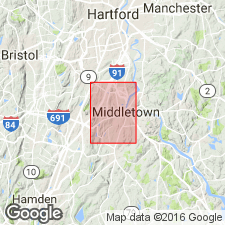
- Usage in publication:
-
- Shuttle Meadow formation
- Modifications:
-
- Named
- Dominant lithology:
-
- Shale
- Siltstone
- Sandstone
- AAPG geologic province:
-
- New England province
- Hartford basin
Summary:
The lower sedimentary division of the Meriden Formation of Krynine (1950) is here named the Shuttle Meadow Formation of the Newark Group. It consists of laminated fissile maroon shale, dark banded shale, and layered siltstone and sandstone. Conformably overlies Talcott Basalt and conformably underlies Holyoke Basalt. Age is Late Triassic.
Source: GNU records (USGS DDS-6; Reston GNULEX).
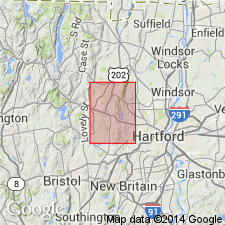
- Usage in publication:
-
- Shuttle Meadow formation*
- Modifications:
-
- Overview
- AAPG geologic province:
-
- New England province
- Hartford basin
Summary:
The Shuttle Meadow Formation of the Newark Group is here accepted for USGS use.
Source: GNU records (USGS DDS-6; Reston GNULEX).
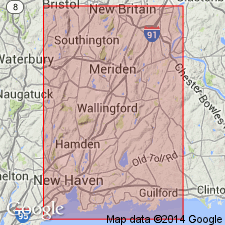
- Usage in publication:
-
- Shuttle Meadow Formation
- Modifications:
-
- Revised
- AAPG geologic province:
-
- New England province
- Hartford basin
Summary:
The Shuttle Meadow Formation is here assigned to the Meriden Group in Connecticut.
Source: GNU records (USGS DDS-6; Reston GNULEX).
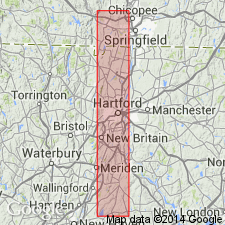
- Usage in publication:
-
- Shuttle Meadow Formation
- Modifications:
-
- Age modified
- AAPG geologic province:
-
- New England province
- Hartford basin
Summary:
Palynoflorules in the Shuttle Meadow Formation suggest that it is basal Liassic or possibly upper Rhaetic in age.
Source: GNU records (USGS DDS-6; Reston GNULEX).

- Usage in publication:
-
- Shuttle Meadow Formation*
- Modifications:
-
- Overview
- AAPG geologic province:
-
- New England province
- Hartford basin
- Pomperaug basin
Summary:
Used as Shuttle Meadow Formation of Early Jurassic age. Consists of reddish-brown to pale-red arkosic sandstone and siltstone, and gray sandstone, gray mudstone, and black shale; interpreted as lake beds. Includes pale-red conglomerate and arkosic sandstone unit separately mapped.
Source: GNU records (USGS DDS-6; Reston GNULEX).
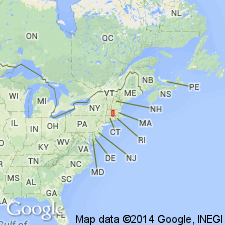
- Usage in publication:
-
- Shuttle Meadow Formation*
- Modifications:
-
- Areal extent
- AAPG geologic province:
-
- New England province
- Hartford basin
Summary:
The Shuttle Meadow Formation is assigned to Newark Supergroup and is extended into MA in the Hartford basin. It consists of sandstone strata containing one interval of gray mudstone beds. The unit grades eastward along strike into a conglomeratic facies. It overlies the New Haven Arkose or Hitchcock Volcanics and underlies the Holyoke Basalt.
Source: GNU records (USGS DDS-6; Reston GNULEX).
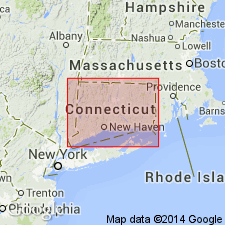
- Usage in publication:
-
- Shuttle Meadow Formation*
- Modifications:
-
- Overview
- AAPG geologic province:
-
- New England province
- Hartford basin
- Pomperaug basin
Summary:
The Shuttle Meadow Formation of the Newark Supergroup overlies the Talcott Basalt or the New Haven Arkose in the Hartford and Pomperaug basins.
Source: GNU records (USGS DDS-6; Reston GNULEX).
For more information, please contact Nancy Stamm, Geologic Names Committee Secretary.
Asterisk (*) indicates published by U.S. Geological Survey authors.
"No current usage" (†) implies that a name has been abandoned or has fallen into disuse. Former usage and, if known, replacement name given in parentheses ( ).
Slash (/) indicates name conflicts with nomenclatural guidelines (CSN, 1933; ACSN, 1961, 1970; NACSN, 1983, 2005, 2021). May be explained within brackets ([ ]).

